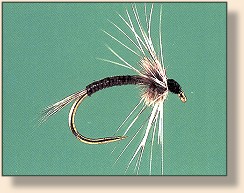Peacock herls from the eye and sword feathers produce the
best stripped quills. On eyed feathers, the herls from the
lower half of the eye have a two-tone color that produces
distinct banding when wrapped, but these herls are short
and thin and are best for smaller flies. Herls from sword
feathers are longer but more uniform in color; they work
well for larger flies. Presoaking herls in water makes
them more pliable and less likely to split when wrapped.
Materials List:
Originator: Vic Bergman
Hook: Scud, 2X heavy, sizes 12-20.
Thread: Black.
Tail: Grizzly hackle fibers.
Abdomen: One strand stripped peacock herl.
Thorax: Natural ostrich herl, optional, brass bead.
Hackle: Grizzly.
Tying Instructions:
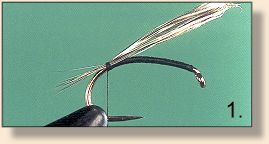
1. Mount a hook in the vise. Tie in the thread at the front
and advance it to the rear. Mount the hackle fibers at the rear
tie-in position with 3 thread wraps. Do not trim the excess
hackle fibers.
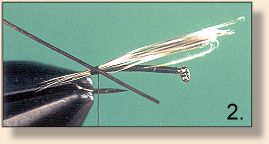
2. Use 3 tight thread wraps to mount the stripped peacock
herl back from the tip at the angle shown. Do not trim the excess.

3. Counter-twist the thread to flatten it; then wrap the
thread forward over the butt ends of the tail fibers and
quill, forming a smooth underbody, as shown.
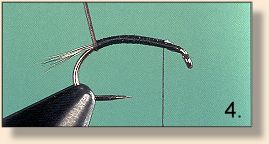
4. Trim the excess quill and tail fibers. If the quill is
short, use hackle pliers to grip it. Start by taking the first
wrap of the quill toward the rear to cover the thread wraps.
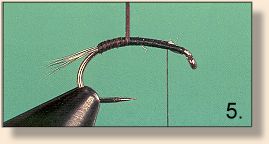
5. Wind the quill forward. Place the wraps snug against one
another, as shown. Do not overlap the edges or the segmented
effect will be lost.
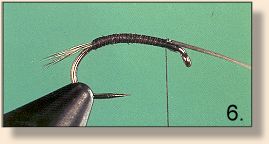
6. Continue winding the quill to the front tie-off position
and secure the quill with 3 thread wraps.
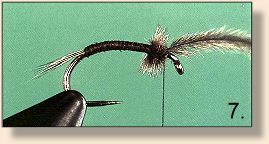
7. Trim the excess quill. Mount the ostrich herl at the
tie-in position, take 3-4 wraps forward and secure the herl
with 3 thread wraps.
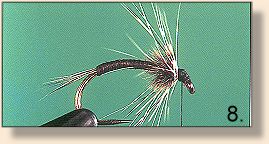
8. Trim the excess herl. Use the collar hackle method to mount
the feather and take 1-2 wraps; secure the hackle and trim the
excess. Tie off the thread and finish the head.
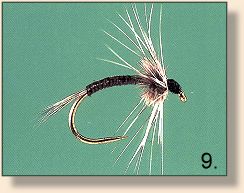
~ Jim Schollmeyer
Credits: The Peacock Midge is one of the many excellent
instructional flies presented in Jim Schollmeyers book,
Nymph Fly-Tying Techniques, published by
Frank Amato Publications.

